#avian-american
Explore tagged Tumblr posts
Text


Hello crow on my roof :)
(Photo taken by me on FujiFilm x-t30)
#crow#crows#American crow#bird#birds#birding#bird photography#birdblr#birdwatching#wild birds#corvid#corvids#animals#photographer#photography#wildlife#wildlife photography#animal#animal photography#nature photography#avian#bird pics
435 notes
·
View notes
Text

speaking of new aus, i don't think i posted this grian design yet—
71 notes
·
View notes
Text

Happy Pride from Kia and Kalla! These bird are gay, good for them!
Taking a small break from Ornithia this week, but will be back next week!
This piece is currently available as this month's Patreon Postcard Print for anyone in the "Kestrel Kinship" or "Gyrfalcon's Gratitude" tiers on my Patreon! Pledge before the end of this month if you're interested!
#ornithia#Kia#Kalla#american kestrel#gyrfalcon#furry#furry art#bird furry#avian art#avian furry#watercolor
93 notes
·
View notes
Text
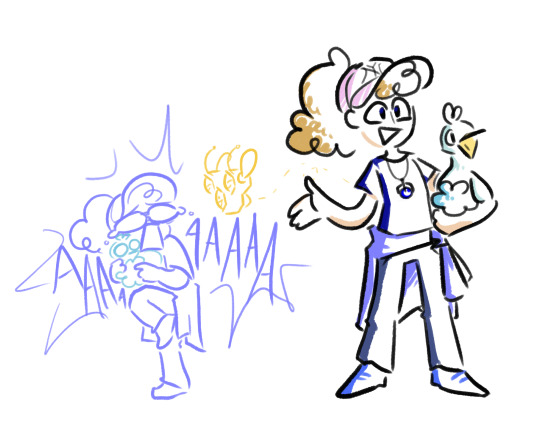
in response to modmad's post - kid pokemon trainer self with the pokemon i'd most realistically have gotten as a starter
i lived in the most suburban place imaginable, so it's a little hard to find an animal that isn't a bug or small bird or perhaps rodent, and the plant life is a bit too monocultured/lacking given the degree of development, but, uniquely, there's plenty of water around, and we did have a lake full of geese, ducks, and swans within walking distance. the elementary school playground had tons of waterfowl trudging about, and we even used to have a problem with a duck couple that'd try to nest in our pool. ducklett therefore feels appropriate!!
#ada weblog tag#pokemon#pokemon starter selfie#//''why not quaxly'' i'm an american new yorkah. we are getting unovan pokemon.#//i considered pidove too of course. lots of birds#//given i'm scared of bugs and my mom is scared of mice... avians it is
92 notes
·
View notes
Text
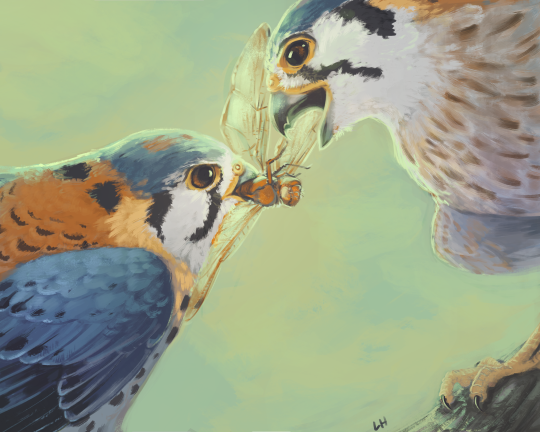
Happy Valentine's Day! This piece of mine from the 2019 Month of Love challenge shows you how to win your valentine over with great success - give them the biggest bug you can as a sign of your love!
#valentine's day#american kestrel#kestrel#falcon#avian courtship#scientific illustration#birds in love#kestrels#falcons#ornithology#artists on tumblr
610 notes
·
View notes
Text
H5N1: What to know before fear spreads
What is H5N1?
H5N1 is a 1996 strain of the Spanish or Avian Flu first detected in Chinese birds before spreading globally across various avian species. H5N1 is similar to H1N1, but spreads slower and has a much higher mortality rate.
H5N1 may also be referred to as Influenza A. The American Association of Bovine Practitioners has seen fit to rename H5N1 to Bovine Influenza A Virus, or BIAV, and are encouraging others to use the same terminology.
I would not be surprised if the colloquial name among the public becomes Bovine Flu or American Flu in the coming months, and may be referred to as the Chinese Flu by the same folks who took the spark of the SARS-CoV-2 (COVID-19) pandemic as an excuse to be publicly racist to East Asian people without social repercussions.
BIAV is a virus, meaning that it is a (probably) non-living packet of self-replicating infectious material with a high rate of mutation. BIAV is structured similarly to SARS-CoV-2, having a packet of infectious material encased in a spherical shell with a corona, or crown, of proteins that can latch to living cells to inject RNA.
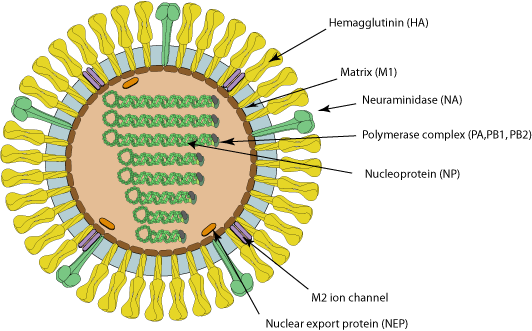
Image source with interactive model: ViralZone - H5N1 subtype
What is the history of BIAV?
In 1996 and 1997, an outbreak of BIAV occurred among poultry and infected 18 people in Hong Kong, 6 of which died. This seemingly isolated incident then infected ~860 people with a >50% death rate.
At the time, BIAV was known as Highly Pathogenic Avian Influenza, or HPAI, and killed nearly 100% of chickens within a 48 hour period.
From 2003 to 2005, continual outbreaks occurred in China and other East Asian countries, before spreading to Cambodia, the Netherlands, Thailand, and Vietnam.
From 2014 to 2016, it began being detected in American fowl, as well as mutating the H5N6 (lethal in birds, no human to human transmission) and H5N8 (largely spread through turkeys, ducks had immunity) viruses.
BIAV has since evolved into a clade known as 2.3.4.4b, and was first detected in 2021 in wild American birds. This then caused outbreaks in 2022 among wild and domesticated birds (such as chickens) alike, but was largely being overshadowed by the pressing SARS-CoV-2 pandemic at the time.
From 2022 to 2023, it was observed to be spreading among various mammals, including humans. Now, in 2024, we're having the most concerning rapid outbreak of BIAV since 2003.
BIAV is known to spread from mammal to mammal, particularly between cows and humans. BIAV may also be spread from cow to cow (highly likely, but not confirmed - this is likely the reason the virus has spread to Idaho from Texan cattle), and is known to be lethal to domestic cats and birds within 48 hours.
How does BIAV spread?
BIAV spreads through fomites - direct contact with infected animals or infected surfaces and then touching parts of your face or other orifices - as well as through airborne particulates, which may be inhaled and enter the sinuses and lungs.
BIAV is known to spread through:
Asymptomatic Ducks, geese, swans, various shorebirds
Symptomatic, may be lethal Foxes, bears, seals, sea lions, polar bears, domestic cats, dogs, minks, goats, cows, (potentially human to human, but unconfirmed - there have only been 8 potential human to human cases in 2024).
How can I protect against BIAV?
As BIAV is a type of Influenza A, existing protocols should do fine.
Current recommendations are to wash your hands vigorously after interacting with birds (I would also recommend doing this with mammals), avoid touching your face or other open orifices, and wear N95 masks.
Avoid sick or dead animals entirely - I would also recommend reporting them to your local Animal Control or veterinary centre and warning them about the infection risk. People who work with animals are recommended to also wear full PPE such as N95 masks, eye protection, gloves, and partake in vigorous hand washing.
If you suspect you've caught BIAV, seek medical attention immediately. Existing medications such as oseltamivir phosphate, zanamivir, peramivir, and baloxavir marboxil can reduce BIAV's ability to replicate.
Standard flu shots will not protect against BIAV. Remember - symptoms of BIAV may not manifest for between 2 to 8 days, and potentially infected people should be monitored for at least 10 days.
How far has BIAV spread?
BIAV is currently a global virus, though the current infection location of note is the United States.
Image Key: Dark red - Countries with humans, poultry and wild birds killed by H5N1 Deep red - Countries with poultry or wild birds killed by H5N1 and has reported human cases of H5N1 Light red - Countries with poultry or wild birds killed by H5N1
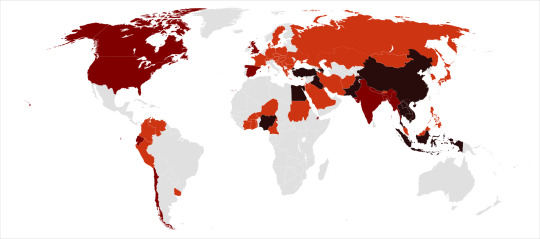
Image source: Wikipedia - Influenza A virus subtype H5N1 - File: Global spread of H5N1 map

Image source: Metro.co.uk - Map shows where bird flu is spreading in US amid new warning - File: The Centers for Disease Control and Prevention’s H5N1 bird flu detections map across the United States
Should I be afraid?
You needn't be afraid, just prepared. BIAV has a concerningly high lethality, but this ironically culls its spread somewhat.
In the event human to human transmission of BIAV is confirmed, this will likely mainly affect marginalized communities, poor people, and homeless people, who are likely to have less access to medical care, and a higher likelihood of working in jobs that require frequent close human contact, such as fast food or retail jobs.
Given the response to SARS-CoV-2, corporations - and probably the government - may shove a proper response under the rug and refuse to participate in a full quarantine, which may leave people forced to go to work in dangerous conditions.
If this does spread into an epidemic or pandemic, given our extensive knowledge about Influenza, and the US having a backup vaccine for a prior strain of H5N1, a vaccine should be able to be developed relatively quickly and would hopefully be deployed freely without charge - we won't have to worry about a situation like The Stand.
Wash your hands, keep clean, avoid large social gatherings where possible, wear an N95 mask if you can afford them (Remember: Cloth masks are the least protective, but are better than nothing. If you can't afford N95 masks, I recommend wearing a well-fitted cloth mask with a disposable face mask over it to prevent pneumonia from moisture buildup in the disposable mask), support the disabled, poor, and homeless, and stay educated.
We can do better this time.
Further things to check out:
YouTube: MedCram - H5N1 Cattle Outbreak: Background and Currently Known Facts (ft. Roger Seheult, M.D.)
Wikipedia - Influenza A virus subtype H5N1
Maine.gov - Avian Influenza and People
CDC.gov - Technical Report: Highly Pathogenic Avian Influenza A(H5N1) Viruses
Wikipedia - H5N1 genetic structure
realagriculture - Influenza infection in cattle gets new name: Bovine Influenza A Virus (BIAV)
#H5N1#bird flu#avian flu#bovine flu#BIAV#pandemic#epidemic#COVID 19#coronavirus#spanish flu#long post#text post#no id#undescribed#news#politics#us news#us politics#american news#american politics#world news#global news#global politics#world politics#lgbt#lgbtq#queer#trans#communist#socialist
49 notes
·
View notes
Text
Weird Birds
all birds are weird cause they're reptiles but here are especially weird birds

Hooded Pitohui - Pitohui dichrous LC
poisonous bird, scientist confirmed if you touch it then touch your fingers to your mouth it makes your mouth numb, important science

American Dipper - Cinclus mexicanus LC
looks like normal bird, lies only genus of semi-aquatic song bird flies through water

Bearded Vulture/Lammergeier - Gypaetus barbatus NT
primarily eats bones, generally terrifying

Magnificent Frigatebird - Fregata magnificens LC
thinks it's a frog, speaks for itself

Resplendent Quetzal - Pharomachrus mocinno NT
actually an aztec god will sing again when land if free from Spanish rule

American Woodcock - Scolopax minor LC
actual nicknames include memebird, timberdoodle, mudbat bogsucker, night partridge and labrador twister, slowest flying bird 8km/h 5mph

Oilbird/Guácharo - Steatornis caripensis LC
birds that decided to become bats, live in colonies in caves, nocturnal, uses echolocation to navigate, eats fruit, who wore it better

Shoebill - Balaeniceps rex VU
actual dinosaur related to pelicans, carnivorous, makes terrifying clacking noises with beak

Hoatzin - Opisthocomus hoazin LC
stink bird, capable of fermentation digestion similar to ruminant mammals, chicks have two functional claws on wings
Maleo - Macrocephalon maleo CR EN

deadbeat parents bury their eggs in sand and leave, chicks digs it's way out dries off and within hours can fly
#Hooded Pitohui#American Dipper#bearded vulture#magnificent Frigatebird#resplendent Quetzal#american woodcock#oilbird#shoebill#hoatzin#maleo#birds#weird bird#weird animals#avian#aves#dinosaurs#critically endangered#endangered species#biodiversity
28 notes
·
View notes
Text

He was lured in by the idea of 'unlocking your natural flying talent in a simple easy fully accredited flyer's course!' It had a physical aspect as well, since flying has a minimum health requirement, but uh-oh! Someone didn't read the fine print!
It's okay though. She's still colorful, and she's at least not the diminutive size of a regular goldfinch! She's a giant goldfinch, a whole three iphones tall!
#my art#transformation#transfur#bird#avian#goldfinch#american goldfinch#furry#semi anthro#semianthro#post-tf#post-transformation#gender transformation#tgtf#tftg
22 notes
·
View notes
Note
Question
Do you believe in Connecticut?
Like do you think it’s real?
-one of moth’s friends
WHAT????? WHAT DO YOU MEAN DO I BELIEVE IN CONNECTICUT??????? LIKE. THE STATE???????? YES??????????????
#avian killing machine#anon. friend of moth. i am giggling so mych#i had to take a sidebar because. im not american and. i didnt remember if connecticut was a state or a city or whatever#this really sent me
8 notes
·
View notes
Text











#nature#photography#bird#avian#feathers#canada goose#goose#chickadee#red winged blackbird#mallard#piper#american robin#woodpecker
5 notes
·
View notes
Text
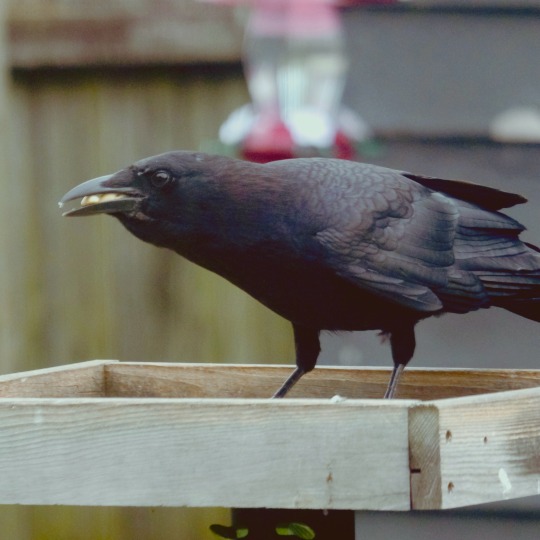
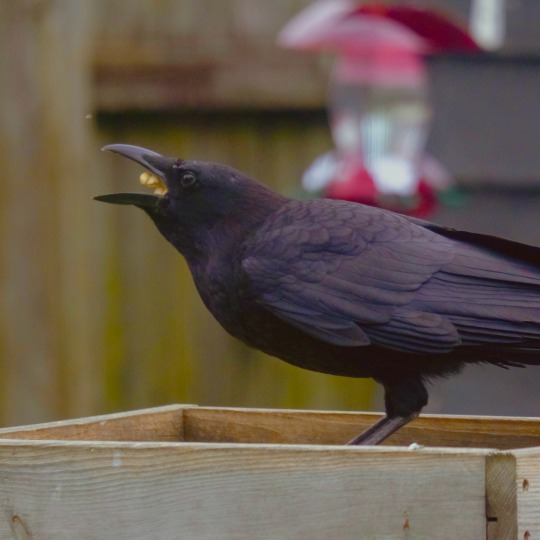
This crow on my platform feeder doing whatever it takes to guzzle down as many peanuts as possible
(Photo taken by me on FujiFilm X-T30)
#animals#crow#American crow#corvid#corvids#bird#birds#bird photography#birdwatching#birdblr#birding#bird watching#photographer#photography#animal#animal photography#wildlife#wild animals#wildlife photography#avian#nature#nature photography
291 notes
·
View notes
Text













Falco sparverius better known as the American kestrel or american sparrowhawk, is a species of common falcon that can be found throughout most of the Caribbean, North, Central, and South America from as far north as Alaska and northern Canada, to as far south as Argentina and Tierra Del Fuego. The American kestrel is also an occasional vagrant in the UK, Denmark, Malta and the Azores. Here they inhabit a wide range of biomes including taiga, temperate and tropical forests, grasslands, meadows, deserts, mountainous regions, coastal regions, swamps, marshes, tundra, scrublands, agricultural lands, and urban and suburban areas. A kestrel's habitat must include perches, open space for hunting, and cavities for nesting (whether natural or man-made). American kestrels primarily feed upon insects, arachnids, lizards, mice, voles, shrews, frogs, snakes, squirrels, bats, and small birds. Reaching some 8.7 to 12.2 inches (22 to 31cms) in length, 2.8 to 5.8 ounces (80 to 165g) in weight, with a 20 to 24 inch (51 to 61cm) wingspan, the American kestrel is the smallest raptor native to the Americas. It is a sexually dimorphic species with females being around 10 to 15% larger than males. Whilst both sexes have a white head with a blue top and a rufous back with noticeable barring, males have blue-grey wings with black spots and white bellies with black spotting whilst females sport red to brown wings with dark brown barring and cream colored bellies with brown streaking. American kestrels are monogamous and mate for life, with breeding typically occurring during the spring. Perspective parents build there nests inside of the cavities of trees, cacti, cliff faces, or buildings. Here a mother kestrel will lay 3 to 9 eggs, which are incubated by both parents for 30 days. After hatching the young remain with there parents for 31 days. Under ideal conditions an American Kestrel will reach sexual maturity at 1 year of age and may live up to 17.
#pleistocene pride#pliestocene pride#cenozoic#bird#falcon#kestrel#american kestrel#avian#animal facts
4 notes
·
View notes
Text

Kia and Aria for Mother’s Day <3
134 notes
·
View notes
Text


You're up to something, and I haven't figured out what yet
5 notes
·
View notes
Text

Black Vulture
Buitre Negro
While stumbling through the desert in +100 degree heat this is not what you want to look up and see circling low above you.
Mientras caminas a tropezones por el desierto con un calor de 40 grados, esto no es lo que quieres mirar hacia arriba y ver dando vueltas a baja altura sobre ti.
#photographers on tumblr#Not a Raven#bird photography#vulture culture#original photographers#photography#david e ragland#davideragland#arizona#sonoran desert#avian#nature#american southwest#Buitre Negro#pajaros#negra
3 notes
·
View notes
Text

Pride gives you wings! Art Fight attack for @corbinbelasco. Corbin's headset changes color based on the emotion he's feeling — looks like this new one is especially powerful!
#art fight#team seafoam#furry#furry art#gay furry#furry artwork#furry artist#anthro#avian#avian art#corvid#raven#american redstart#my art#emeraldswirl
4 notes
·
View notes